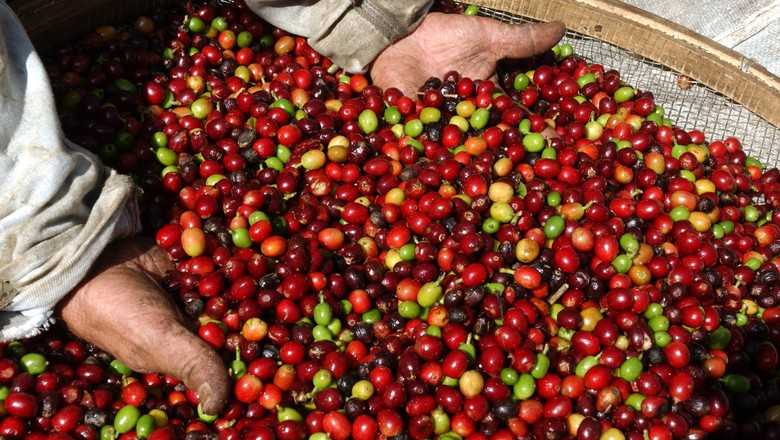The weather favored robusta crops in Espírito Santo (ES) in the first fortnight of December, increasing expectations for the output in the next season.
Agents forecast the water volume at reservoirs and rivers in that state will increase, which may favor bean filling and improve productivity.
Despite the good volumes in early December, rainfall needs to continue high in the first semester of 2018 to provide good results to coffee crops. In Rondônia and Bahia, the scenario was positive as well, with favorable weather for bean filling, which may result in good production.
That scenario, however, pressed down the domestic prices of robusta. On December 15, the CEPEA/ESALQ Index of robusta type 6, screen 13, Espírito Santo State, closed at 359.18 BRL (108.65 USD) per 60-kilo bag, 3.5% down compared to that on November 30.
Robusta price drops this year have kept growers away from the market during the season, slowing down the pace of trades, mainly in Espírito Santo.
According to the agents consulted by Cepea, until mid-December, in that state, between 25% and 50% of the crops need to be traded, against 15% in the same period last season.
In Rondônia, however, from 5% to 10% of the coffee from last season is available for trades, similar to the 2016/17 crop.
Arabica
After consecutive price drops in the domestic and international markets, agents retracted, hampering arabica trades. However, the main limiting factor for trades this month is the fiscal issue, due to income tax, which tends to keep growers away from the market until the end of the month.
The CEPEA/ESALQ Index of arabica type 6, hard cup or better (delivered in São Paulo city), dropped 2.65% between November 30 and December 15, closing at 444.19 BRL (134.36 USD) per 60-kilo bag on December 15.
Arabica trades have been at a slower pace in Brazil this year as well. Besides, smaller output this season has driven sellers away from the market.
In southern Minas Gerais, the largest arabica producing region in Brazil, Cepea collaborators estimate the volume traded this crop between 55% and 70%, against 70% in the same period last season.
In the remaining arabica regions, the scenario is similar, with lower volumes traded compared to the same period last year.
Trades are expected to continue slow in December. Agents believe the remaining coffee amount should be traded only in the first semester of 2018 or when growers need cash flow.
However, sellers may continue unwilling to trade, since prices tend to be lower in 2018, due to good expectations regarding the 2018/19 crop.










